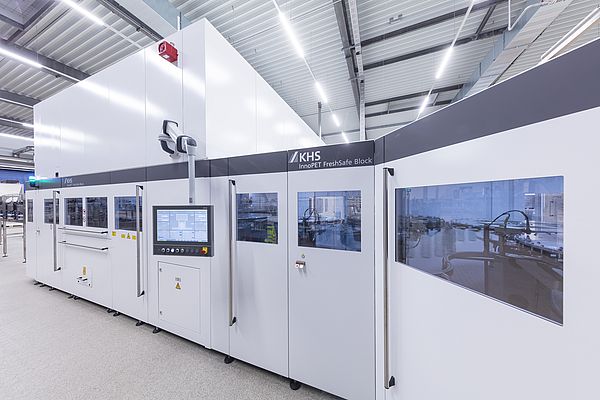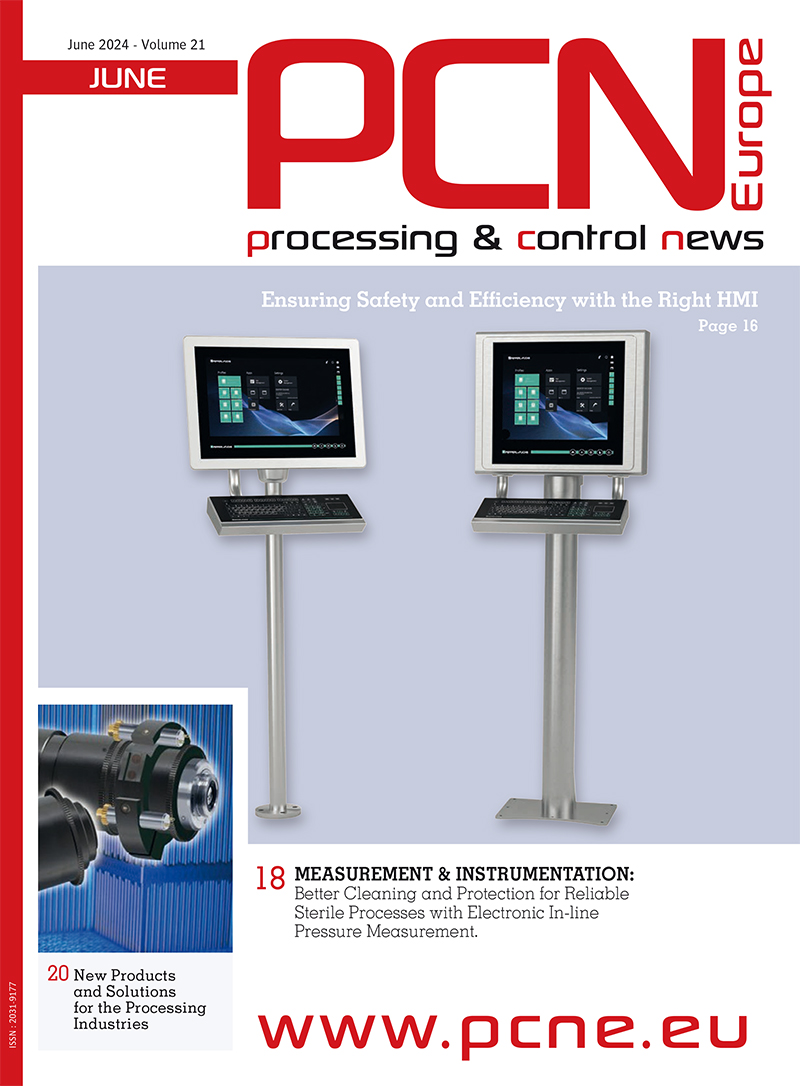The mineral water VILSA extracts from deep underground in Bruchhausen-Vilsen in the German federal state of Lower Saxony is over a thousand years old and naturally pure. For Henning Rodekohr, CEO of the VILSA Group and a representative of the fourth generation of the family firm, the long-term protection of his spring is a fundamental concern.
All varieties of VILSA mineral water have been organically certified since 2021 and are thus subject to the strictest threshold values and highest sustainability standards commonly applied on the German mineral water market. The bottler has also been provably climate-neutral since 2021. By actively promoting various sustainability measures in agriculture, in cooperation with local farmers VILSA helps to maintain a high quality of the soil and groundwater in the vicinity of its spring. This striving to protect the local environment ultimately triggered the bottler’s decision to switch over to KHS Plasmax coating technology for all non-returnable containers used to fill the VILSA brand.
From the spring to natural enjoyment – perfectly conveyed taste
The advantages are obvious: FreshSafe PET combines the low weight and robustness of the plastic container with the much better barrier properties of the glass bottle. The tried-and-tested system protects the bottle against oxygen pickup and carbon dioxide loss, which
both extends the shelf life and increases flavor stability. Moreover, FreshSafe PET also provides a number of key positives when it comes to establishing closed recycling loops. Unlike PET bottles that contain additives to improve the barrier effect and shelf life, the KHS equipment permits full bottle-to-bottle reuse as the interior coating is completely washed off during the recycling process.
Optimum product protection
Characteristic for VILSA mineral water are its pH, natural ingredients and gentle mineral content. This makes it a sensorily demanding product, however, that reacts extremely sensitively to off-flavors or sunlight. Thanks to the wafer-thin barrier of chemically pure glass in the containers, VILSA’s natural taste is now protected against oxygen pickup and loss of flavor and CO2 for a considerably longer period of time. The PET material also loses none of its proven benefits, meaning that consumers profit from top product quality.
Proved sustainable and save
Back in 2019 the Lower Saxon mineral water bottling plant switched the material of all of its non-returnable bottles over to [r]PET. In adding coating technology to its plant engineering setup, the company is now continuing its drive for sustainability. Both the EPBP (European PET Bottle Platform) and North America’s APR (Association of Plastic Recyclers) have confirmed that FreshSafe PET is fully recyclable. The container’s suitability for use with foods has also been officially established by the US Food and Drug Administration or FDA, among other institutions. As the interior glass coating is less than 0.1 micrometers thick and chemically bonded to the inside wall, it is flexible. It cannot be accidentally removed or flake off when force is applied to the bottle, with the coating only separating off during the recycling process.
Intensive development process
The first coated bottles are now being distributed to retailers, with more and more consumers able to purchase the new style of packaging and test the noticeably longer fresh taste of VILSA beverages for themselves. The market launch was preceded by an intensive development process. Although a number of well-known bottlers of challenging sensitive products such as juice or carbonated soft drinks have relied on environmentally-friendly Plasmax barrier technology for years, its use for natural organic mineral water was new to the specialists from Dortmund. At a series of workshops on site the experts from KHS steadily worked to meet requirements in the runup to the launch of FreshSafe PET for all container sizes from 0.5 to 1.5 liters.
Perfectly adapted recipe ensures high quality
“We ran extensive simulations to effect an optimum separation behavior of the reaction gas in the coating process and thus achieve perfect distribution of the wafer-thin glass coating in the bottle,” explains Stefan Knappmann, head of Sales for Germany and Switzerland at KHS. “Our Bottles and Shapes specialists defined the exact recipe for each container size, product and carbon dioxide level.” “Our investment and trust in KHS thus take us a big step forward,” claims Henning Rodekohr. “We’re setting new standards on the market with respect to quality and sustainability.”
Most innovative part of the system
To start with, a latest-generation InnoPET Blomax stretch blow molder was installed that was combined with the barrier unit to form an InnoPET FreshSafe block during the later development process. Following preform infeed, stretch blow molding, cooling and transfer, the PET bottles are coated according to the PICVD (Plasma Impulse Chemical Vapor Deposition) method, a process first used in the pharmaceutical industry. Here, the containers are turned upside down and passed on to the coating chamber where a reaction gas mixture is introduced into the bottle in a fine vacuum and this subsequently transformed into a plasma state by microwaves. In this state silicon oxide – the chemically pure glass commonly found in most households – is deposited on the inside of the container. At VILSA bottles are stretch blow molded and coated at a maximum rate of 24,500 containers per hour. The most popular non-returnable format is the 0.75-liter bottle.
Pioneering achievement for premium beverages
“With the new InnoPET FreshSafe block from KHS we’re now the first mineral water bottling plant to have the most innovative barrier technology available on the market – and thus the optimum packaging system for our valuable products,” smiles Henning Rodekohr. “We collect our water from its protected source deep under the ground in a way that’s sustainable and pass it on to our consumers in a perfectly preserved state.” The plant’s personnel are still being trained and instructed by KHS employees on site, yet VILSA’s head of Production and Technology Joachim Weippert can already say that “The partnership with our colleagues from KHS has been and still is marked by a very high level of expertise and has proved extremely cooperative. The entire team got along very well throughout the entire development period, which is an important factor.



















